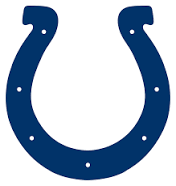Buffalo Bills
- Paul Grange

- Sep 24
- 3 min read

Some team names just fall into place. When Buffalo held a fan contest to name the team in the late 1940s there really could only ever be one winner: Buffalo Bills. The name tied the town’s name to a legend of the Wild West: “Buffalo Bill” Cody. Born in Iowa in 1846, William F. Cody became a scout, a bison hunter, and later the greatest showman of the American frontier. His travelling “Wild West Show” toured the U.S. and Europe, painting a mythic picture of cowboys, Native Americans, and the open plains. To fans in upstate New York, “Bills” made perfect sense — a nod both to their city’s name and to a symbol of grit and adventure.
Bill Cody’s travelling circus of an event acted as both money making spectacle but also boosterism for North America. It amazed crowds from Scotland to Spain, to Wales to Warsaw. Selling people on the romantic notion of Cowboys and Indians, of danger and adventure, of exotic places, animals and people. In a time before mass media physically attending one of his shows was often the only way Europeans learned about life in the Americas – and thousands of people were hooked on the romantic image that Buffalo Bill’s Wild West show sold to them.
The bison on the badge — often called “buffalo” in America — also carries a story of its own. Once, tens of millions of bison roamed the Great Plains, from Canada to Texas. For centuries they were at the heart of Native American life. Nations such as the Lakota, Blackfeet, and Cheyenne relied on them for food, clothing, tools, and shelter. The bison was not just an animal but a spiritual symbol of abundance and survival. But with the arrival of European settlers, the great herds were nearly wiped out. Commercial hunters slaughtered them for hides and meat, while U.S. policy makers encouraged the destruction of bison to break Native resistance. Hunting even became a form of sport: special trains were run across the Plains where passengers fired rifles at the animals from the carriages, leaving carcasses to rot. By the 1880s, the bison was on the brink of extinction. The image of “Buffalo Bill” Cody himself, who earned his nickname by supplying bison meat to railroad workers, is part of a very complicated history of environmental destruction.
So, the badge is more than that of a beast, it’s a reminder of both the promise of the frontier and the costs of expansion. The city itself, at the foot of Lake Erie and the Erie Canal, became a gateway between the Atlantic and the interior, a hub of grain elevators, ports, and industry. The Bills inherit both sides of that story: the power of the animal itself, and the myth of the man who popularised it.
On the field, the Bills have made their mark. They dominated the AFL in the 1960s, winning back-to-back league titles in 1964 and 1965. Their most famous era came in the early 1990s, when Marv Levy’s Bills, led by Jim Kelly, Thurman Thomas, Andre Reed, and Bruce Smith, reached an unprecedented four straight Super Bowls. They lost them all, but the feat of getting there remains unmatched in NFL history — proof of consistency and excellence, even in heartbreak. More recently, under Sean McDermott and quarterback Josh Allen, the Bills have risen again, turning Orchard Park into one of the toughest places to play in the league.
The Buffalo Bills are a bridge between frontier myth and industrial grit. Their logo charges forward, head down, horn lowered — nothing more American than that.







Comments